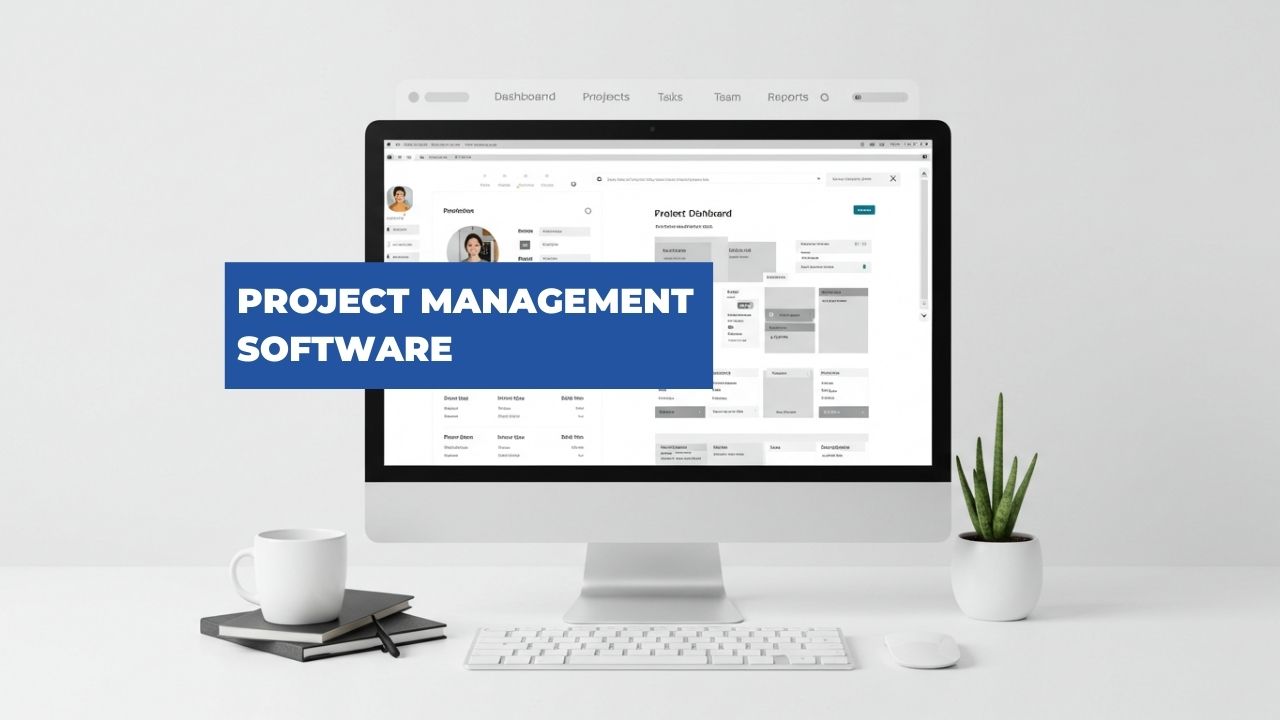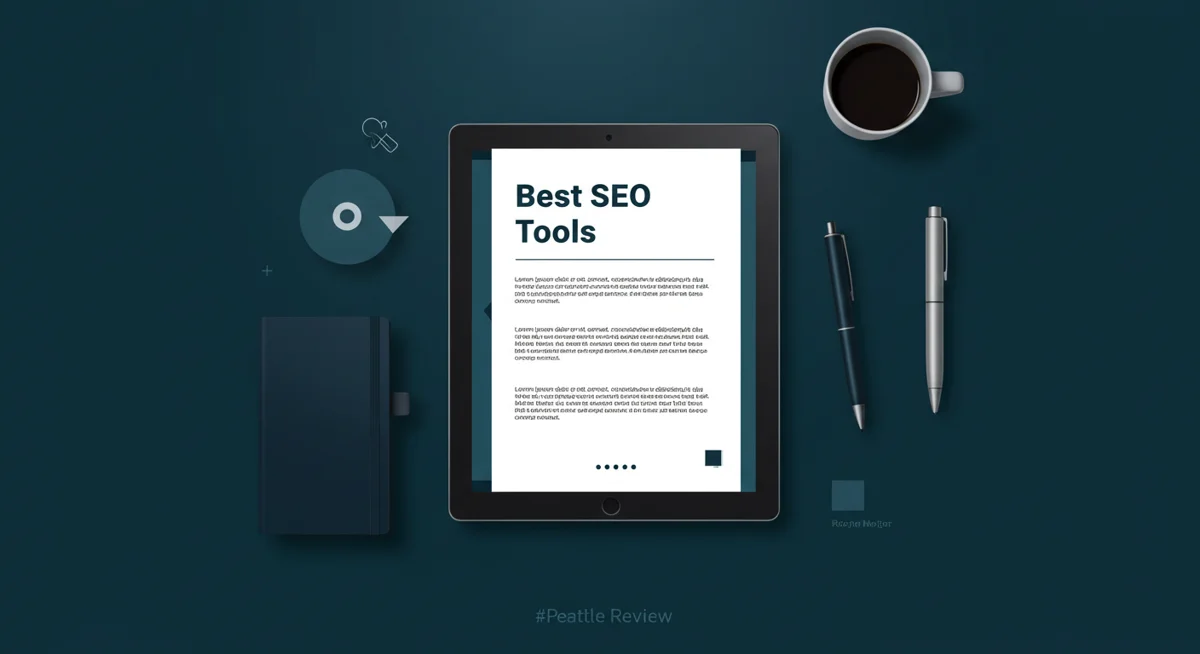Disclosure Information
This blog contains affiliate links. If you make a purchase through one of these links, our team may earn a commission at no extra cost to you. Learn more. Thanks for your support!
Choosing the right project management software is crucial. It can transform how your team collaborates and delivers projects. Without it, chaos can easily take over.
This guide explores the world of project management tools. We aim to help you find the perfect fit for your needs. The market is vast, with many options available.
Understanding the different types and features is key. Let’s dive into what makes great project management software.
Why Use Project Management Software?
Investing in project management software isn’t just about getting fancy new tools; it’s about driving tangible business results. Here’s why it’s essential:
- Centralized Hub: Keeps all project-related information, tasks, files, and communication in one accessible place. No more hunting through emails or disparate documents.
- Improved Collaboration: Facilitates seamless communication and teamwork, whether your team is in the office or distributed globally. Features like comments, @mentions, and shared dashboards keep everyone aligned.
- Enhanced Visibility & Transparency: Provides a clear overview of project progress, individual workloads, potential bottlenecks, and deadlines. Everyone knows who is doing what, and when.
- Better Task Management: Allows for easy creation, assignment, tracking, and prioritization of tasks. Set dependencies, deadlines, and get notified of updates.
- Efficient Resource Allocation: Helps you understand team capacity and allocate resources effectively, preventing burnout and ensuring optimal utilization.
- Accurate Reporting & Analytics: Generates insightful reports on project performance, timelines, budget adherence, and team productivity, enabling data-driven decision-making.
- Increased Accountability: Clearly defined tasks and ownership foster a sense of responsibility among team members.
- Streamlined Workflows: Automate repetitive tasks and standardize processes, saving time and reducing errors.
According to a study by PMI, only 43% of organizations consistently complete projects within budget. Proper software can help improve this metric.
Key Features to Look For in Project Management Software
When evaluating options, certain core features are essential. Consider these functionalities:
- Task Management: Creating, assigning, and tracking tasks. Includes deadlines and priorities.
- Scheduling & Planning: Visual timelines like Gantt Charts or calendars. Helps map out project phases.
- Collaboration Tools: Communication features like comments, file sharing, and team dashboards.
- Resource Management: Assigning personnel and tracking workload capacity. Prevents overallocation.
- Reporting & Analytics: Generating progress reports and performance insights. Essential for monitoring health.
- Budgeting & Cost Tracking: Managing project expenses against the allocated budget.
- Time Tracking: Logging hours spent on specific tasks or projects. Useful for billing and analysis.
- Customization: Ability to adapt workflows, fields, and views to specific needs.
- Integrations: Connecting with other business tools (email, storage, CRM, etc.).
Not every tool offers all features equally well. Prioritize based on your team’s primary requirements.
Top Project Management Tools (and Recommendations)
Project management tools are not one-size-fits-all. They often cater to specific methodologies, team sizes, or industries. Understanding these categories helps narrow your search.
We’ll explore common types and recommend leading software in each. This is the core of finding your best fit.
1. All-Purpose Project Management Tools
These platforms are versatile and highly adaptable. They suit a wide range of teams and project types. They often balance robust features with user-friendliness.
Many offer multiple project views (list, board, calendar, timeline). Customization is usually a strong point. They work well for marketing, operations, IT, and more.
Recommendation 1: Monday.com
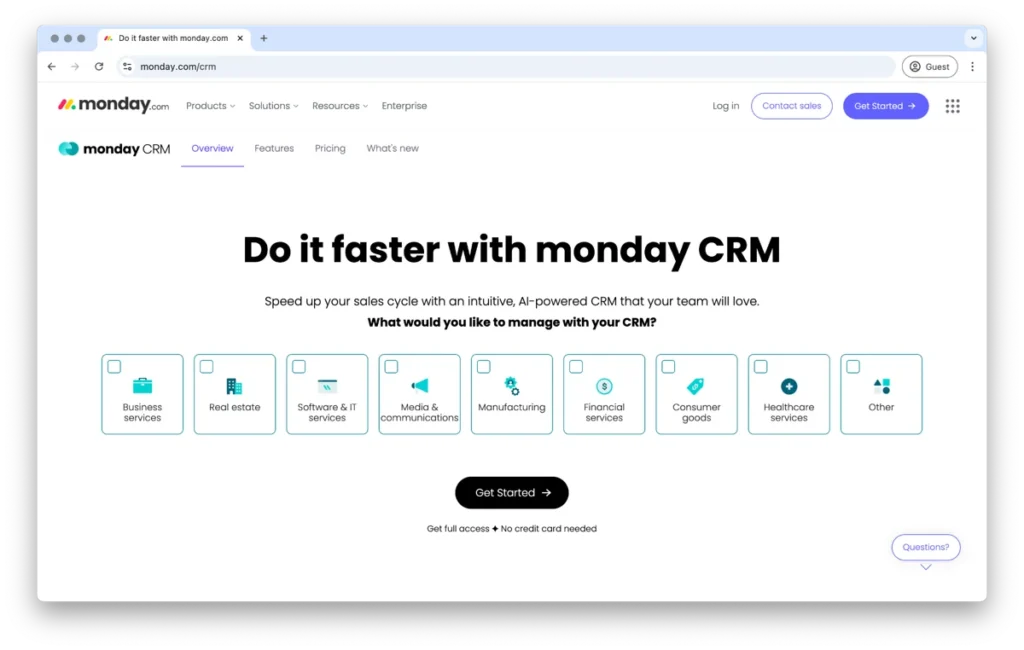
Monday.com is known for its visual interface and flexibility. It excels at workflow automation and customization. Ideal for teams wanting a central hub for all work.
| Feature | Description | Notes |
| Interface | Highly visual, colorful | Easy to grasp |
| Customization | Extensive workflow options | Adaptable |
| Views | Board, List, Gantt, Calendar | Multiple perspectives |
| Automation | Robust rule-based actions | Reduces manual work |
| Use Case | General projects, CRM, Ops | Very versatile |
Who it’s best for: Teams that thrive on visual workflows and need high adaptability find Monday.com excellent. Marketing, sales (using it as a light CRM), and operations teams often find it a great fit. Good for managing diverse types of work in one place.
Potential drawbacks: The sheer number of features and customization options can be overwhelming initially. Costs can increase significantly as you add users or require more advanced features or automations.
Key differentiator: Its strength lies in blending project management with customizable workflow automation. This is delivered in a very accessible, visual package.
Adoption tip: Start with pre-built templates relevant to your industry or department. Gradually introduce automations rather than trying to automate everything at once to ease the learning curve.
Recommendation 2: Asana
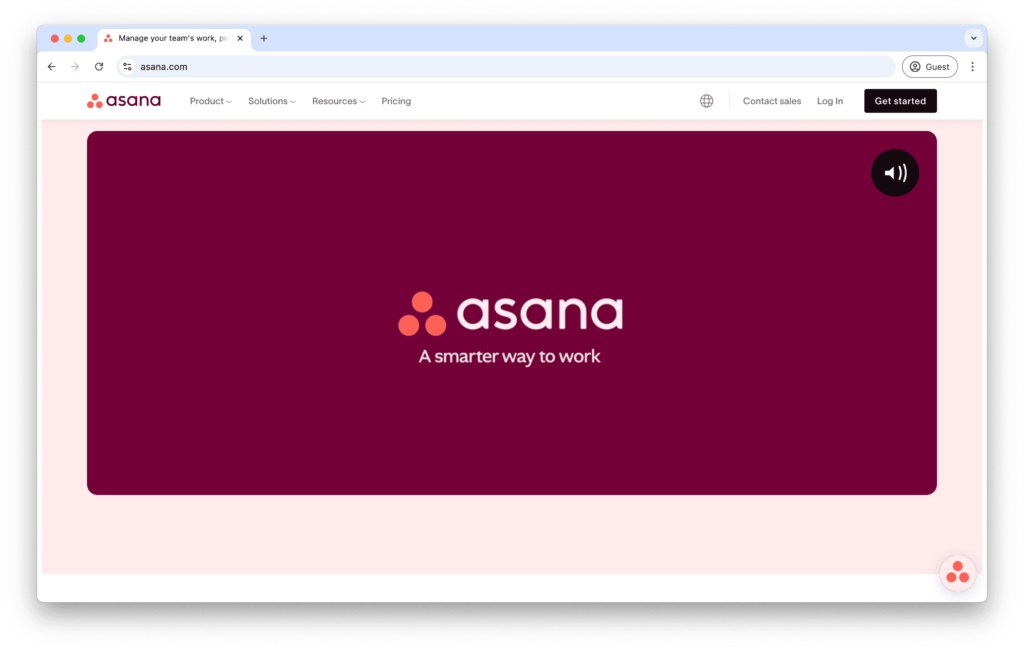
Asana focuses on task management and team collaboration. It helps clarify who is doing what by when. Great for teams managing ongoing work and specific projects.
| Feature | Description | Notes |
| Task Focus | Strong task dependencies | Clear accountability |
| Collaboration | Comments, team pages | Good communication flow |
| Views | List, Board, Timeline, Calendar | Flexible visualization |
| Portfolios | Project overview dashboard | High-level tracking |
| Use Case | Marketing, Operations, IT | Goal-oriented teams |
Who it’s best for: Teams where clear task ownership, deadlines, and project progress tracking are paramount. Often favored by marketing, creative, and operations teams focused on deliverables.
Potential drawbacks: Can feel slightly more rigid than Monday.com or ClickUp for highly unique workflows. Resource management features often require higher-tier plans, adding to the cost.
Key differentiator: Asana excels at clarifying responsibilities and connecting daily tasks to larger strategic goals (using its Goals feature). It offers strong task dependency management.
Adoption tip: Encourage consistent use of assignees and due dates for clarity. Utilize project status updates and Portfolios for effective stakeholder reporting.
Recommendation 3: ClickUp
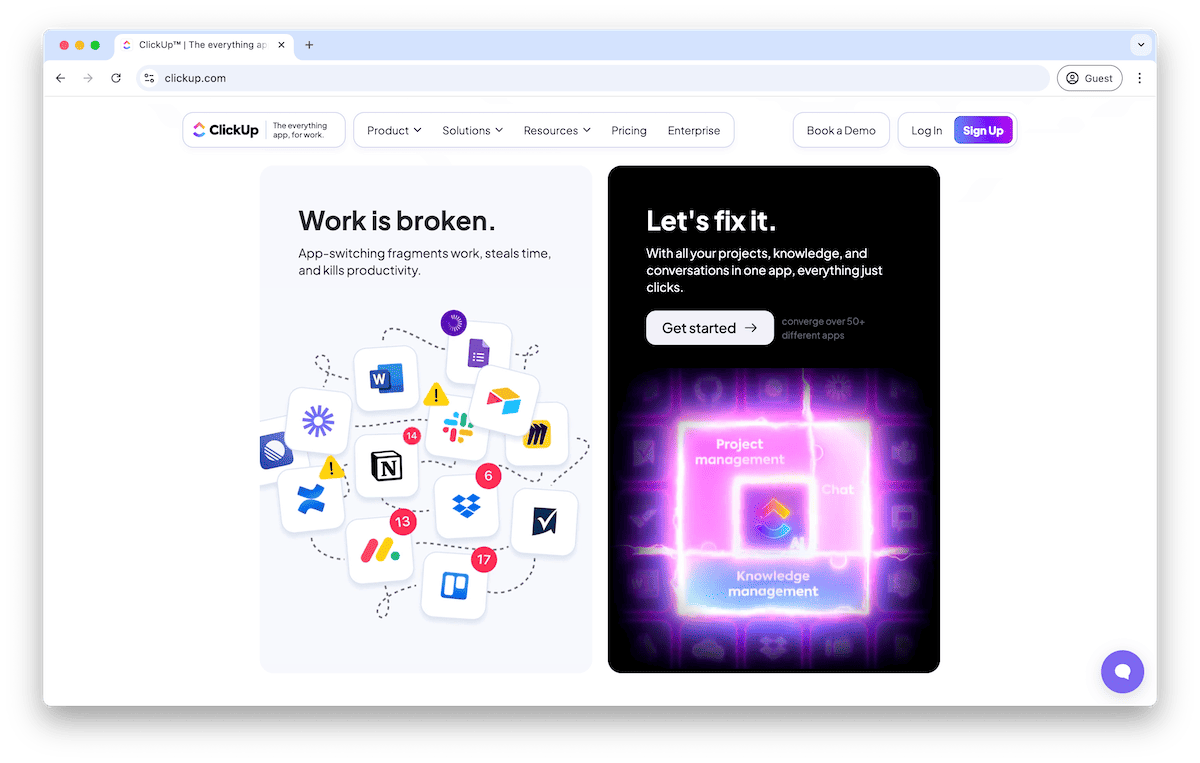
ClickUp aims to be the “one app to replace them all.” It’s incredibly feature-rich and highly customizable. Suitable for teams wanting granular control and many options.
| Feature | Description | Notes |
| Feature Set | Extremely comprehensive | Can be overwhelming |
| Customization | Deeply configurable spaces | Tailor to exact needs |
| Views | List, Board, Box, Gantt, Mind Map | Many ways to view data |
| Docs & Whiteboards | Integrated knowledge base | Centralized information |
| Use Case | Complex projects, varied teams | Power users |
Who it’s best for: Tech-savvy teams, startups, or organizations looking to consolidate multiple tools into one platform. Those who appreciate deep customization and a vast feature set will benefit.
Potential drawbacks: The sheer volume of features can lead to a steep learning curve. Some users report occasional performance issues or find the interface cluttered initially.
Key differentiator: Its “all-in-one” ambition means it packs an extraordinary number of features (Docs, Whiteboards, Goals, etc.) into one platform, often at a competitive price point.
Adoption tip: Start by defining your team’s hierarchy (Spaces, Folders, Lists). Turn off “ClickApps” (features) you don’t need initially to simplify the interface. Focus on mastering core functionalities first.
2. Agile Project Management Software
These tools are built specifically for teams using Agile methodologies. They emphasize iterative development, flexibility, and rapid feedback cycles. Features often include Scrum boards, Kanban boards, and Backlog Management.
Software development teams heavily rely on these platforms. Marketing and other departments are also adopting Agile practices.
Recommendation 1: Jira Software
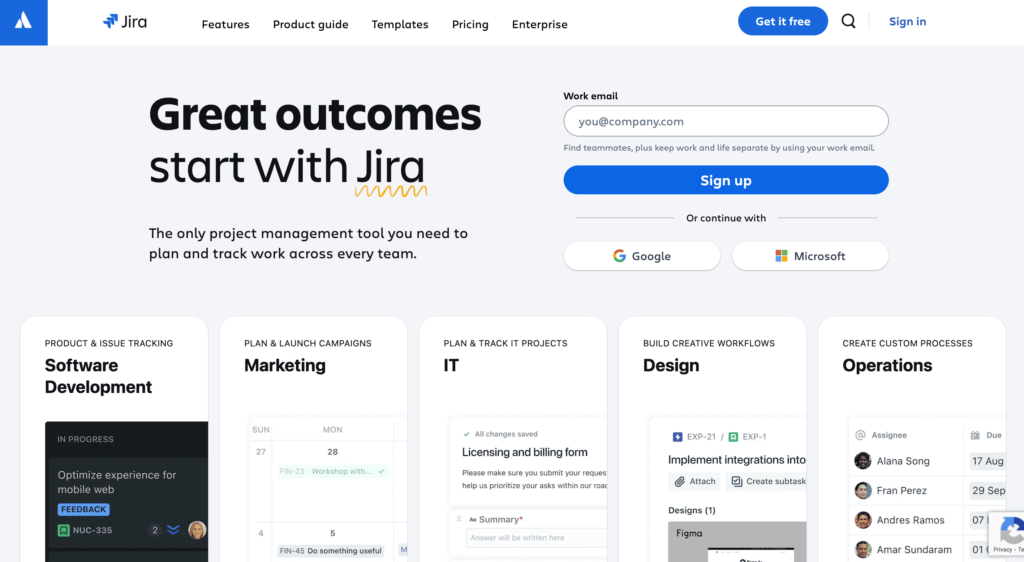
Jira is the industry standard for many software development teams. It offers powerful features for Scrum and Kanban workflows. Integrates tightly with developer tools.
| Feature | Description | Notes |
| Agile Support | Scrum, Kanban boards | Native functionality |
| Issue Tracking | Detailed bug/task tracking | Granular control |
| Reporting | Burndown charts, velocity | Agile-specific metrics |
| Integrations | Strong developer ecosystem | Connects code & tasks |
| Use Case | Software Dev, IT Support | Technical teams |
Who it’s best for: Software development teams using Agile (Scrum/Kanban), IT support, and operations teams needing robust issue tracking.
Potential drawbacks: Jira presents a steep learning curve for non-technical users. Its interface and terminology can be complex. Configuration often requires dedicated admin time.
Key differentiator: Deep integration with developer toolchains (e.g., Bitbucket, GitHub) is a major plus. It offers powerful, customizable workflows specifically for software development lifecycles. It’s the industry standard in this space.
Adoption tip: Leverage the built-in Agile templates to get started quickly. Integrate with your version control and CI/CD tools early to maximize benefits.
Recommendation 2: Trello
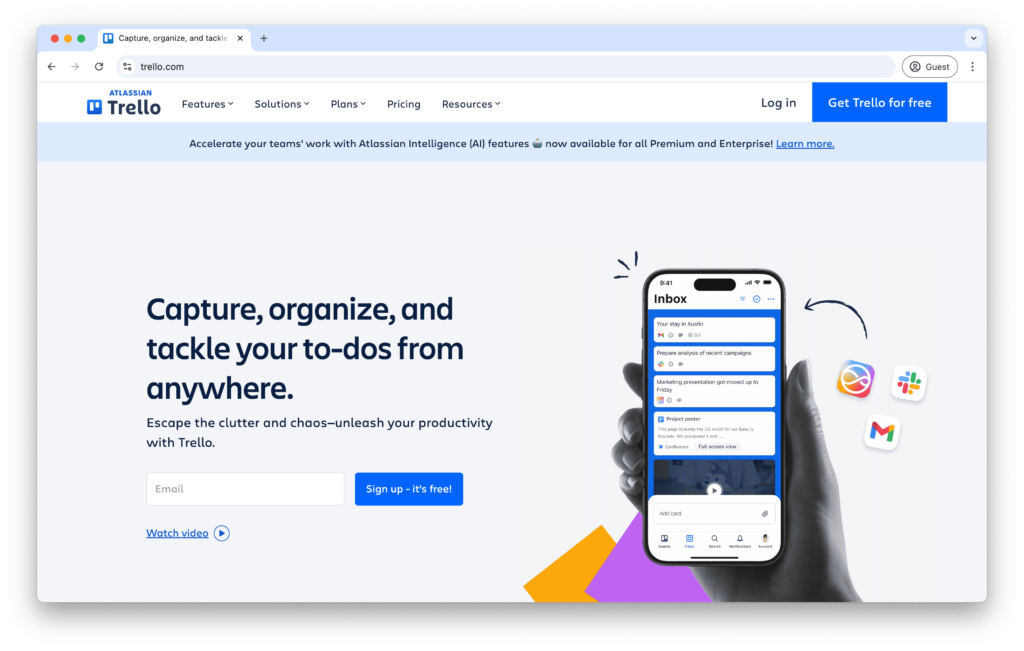
Trello popularized the visual Kanban board approach. It’s simple, intuitive, and highly visual. Excellent for managing workflows and tasks using drag-and-drop cards.
| Feature | Description | Notes |
| Interface | Simple Kanban board | Very easy to learn |
| Visual Management | Card-based task tracking | Intuitive workflow |
| Power-Ups | App integrations, extra features | Extends functionality |
| Collaboration | Comments, checklists, due dates | Basic team features |
| Use Case | Simple projects, personal tasks | Visual-oriented teams |
Who it’s best for: Small teams, individuals, or projects needing a simple, highly visual way to track tasks or workflow stages. Great for content calendars, basic sales pipelines, or simple event planning.
Potential drawbacks: Trello lacks advanced PM features like native Gantt charts, detailed reporting, or complex dependency management. It can become disorganized for very large or complex projects.
Key differentiator: Unbeatable simplicity and ease of use with its core Kanban board interface stand out. It allows for fast onboarding for new team members.
Adoption tip: Keep boards focused on a single project or workflow for clarity. Utilize labels, checklists, and due dates effectively. Explore “Power-Ups” to add specific needed functionality like calendars or time tracking.
3. Simple Task Management & Collaboration Tools
Sometimes, full-blown project management software is overkill. These tools focus on straightforward task lists and basic collaboration. They are often more affordable and easier to adopt.
Ideal for small teams, freelancers, or departments needing basic organization. They prioritize simplicity over complex features.
Recommendation 1: Todoist
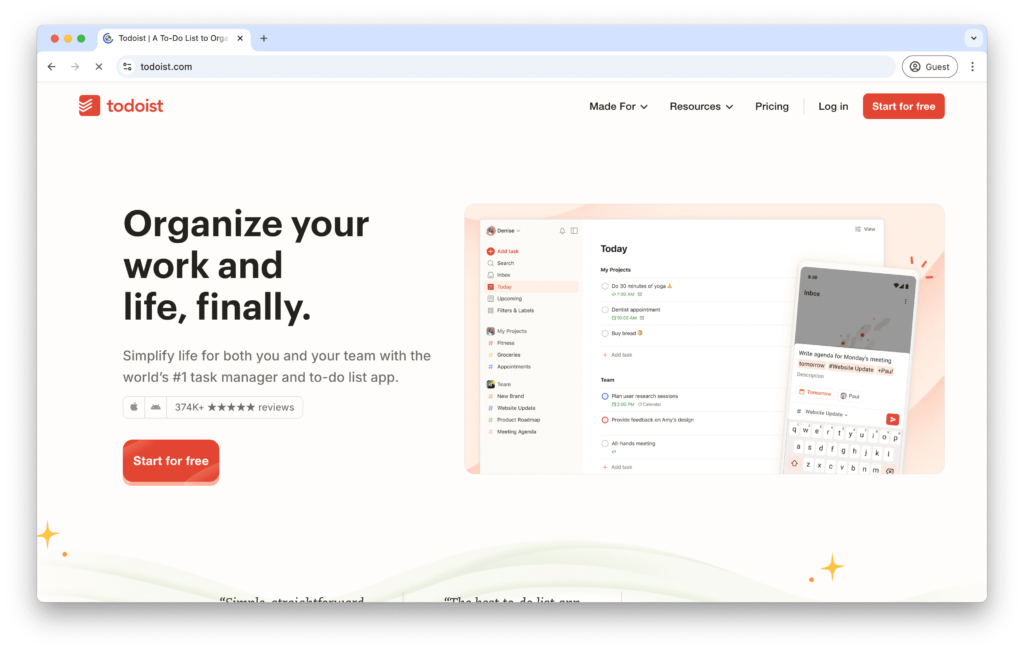
Todoist excels at personal and small team task management. It uses natural language input for quick task creation. Clean interface and strong cross-platform support.
| Feature | Description | Notes |
| Task Input | Natural language processing | Fast task creation |
| Organization | Projects, labels, filters | Flexible sorting |
| Simplicity | Clean, minimalist design | Easy to use daily |
| Collaboration | Basic project sharing | Good for small groups |
| Use Case | Personal productivity, small teams | Task-focused individuals |
Who it’s best for: Individuals managing personal tasks, freelancers, or small teams needing straightforward shared task lists without complex project structures.
Potential drawbacks: It’s primarily a task manager, not a full project management suite. It lacks visual timelines, resource management, and robust collaboration features found in larger tools.
Key differentiator: Speed and simplicity are its main strengths, especially its natural language input for quick task creation. Excellent cross-platform availability and a clean interface are also notable.
Adoption tip: Use projects for broad categories and labels/filters for context and priority. Leverage recurring due dates for routine tasks to stay organized.
Recommendation 2: Basecamp

Basecamp focuses heavily on communication and centralizing project assets. It organizes work into distinct projects, each with its own tools. Great for client work and internal team collaboration.
| Feature | Description | Notes |
| Communication | Message boards, Campfire chat | Centralized discussion |
| Organization | Separate project spaces | Clear boundaries |
| Simplicity | Flat-rate pricing | Predictable cost |
| Client Access | Easy client collaboration | Transparent workflow |
| Use Case | Agencies, client projects | Communication-heavy teams |
Who it’s best for: Client-service businesses like agencies or consultants benefit greatly. Remote teams prioritizing clear communication, and teams preferring a distinct space for each project with integrated discussion also find it useful.
Potential drawbacks: Basecamp has less emphasis on granular task tracking (e.g., no built-in Gantt, limited dependencies). Its opinionated structure might not suit all workflow preferences. Reporting is less detailed than many competitors.
Key differentiator: Its strong focus on centralizing communication and files within project spaces is unique. The simple, flat-rate pricing model is attractive for larger teams. It excels at client collaboration and visibility.
Adoption tip: Encourage consistent use of the designated tools within each project (Message Board, To-dos, Schedule, etc.). This helps keep information organized and discussions focused.
4. Enterprise & Complex Project Solutions
Large organizations often face complex project portfolios. They need robust tools for governance, resource planning, and risk management. These platforms offer advanced features and scalability.
They usually require more setup and training. Security and compliance features are often emphasized.
Recommendation 1: Wrike
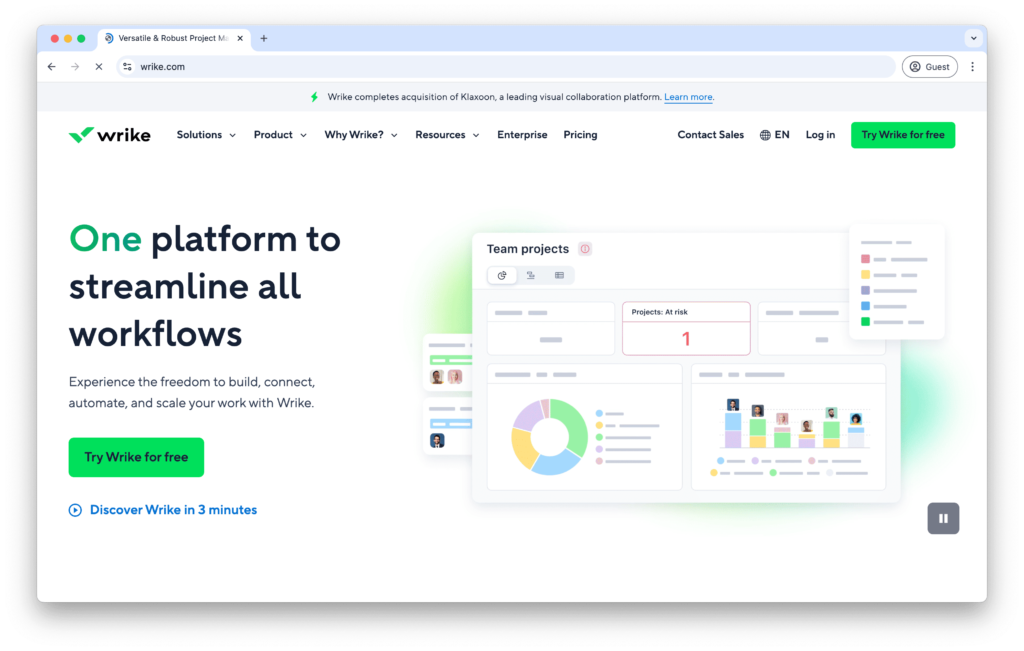
Wrike offers powerful features for cross-functional teams and complex projects. It provides high levels of visibility and customization. Strong reporting and analytics capabilities.
| Feature | Description | Notes |
| Customization | Workflows, dashboards, reports | Highly adaptable |
| Work Views | Gantt, Board, Table, Reports | Multiple perspectives |
| Resource Planning | Workload management tools | Balances team capacity |
| Security | Enterprise-grade options | Meets compliance needs |
| Use Case | Large teams, marketing, Ops | Complex project needs |
Who it’s best for: Larger teams, marketing departments, and professional services firms needing robust features, customization, and cross-functional visibility will find Wrike suitable. It’s good for managing complex projects and workflows.
Potential drawbacks: It can be complex to set up and fully utilize all its features. The interface might feel less intuitive or modern compared to some newer tools. Pricing can be on the higher side for smaller teams.
Key differentiator: Powerful customization options (custom fields, workflows, reports) are a major benefit. Dynamic request forms for standardizing intake and built-in proofing tools are valuable for creative teams.
Adoption tip: Invest time in setting up custom workflows, request forms, and dashboards tailored to your team’s needs. Utilize its robust reporting capabilities for performance insights.
Recommendation 2: Smartsheet

Smartsheet uses a familiar spreadsheet-like interface. It combines this with powerful project management capabilities. Good for teams comfortable with spreadsheets but needing more structure.
| Feature | Description | Notes |
| Interface | Spreadsheet-based | Familiar for many users |
| Automation | Automated workflows, alerts | Increases efficiency |
| Versatility | Project mgmt, CRM, tracking | Multiple use cases |
| Reporting | Customizable dashboards | Data visualization |
| Use Case | Operations, IT, construction | Data-driven teams |
Who it’s best for: Teams comfortable with a spreadsheet paradigm but needing more PM power will appreciate Smartsheet. Operations, IT, construction, event management, and teams managing large datasets or tracking processes often find it suitable.
Potential drawbacks: The spreadsheet interface might not appeal to everyone, especially highly visual teams. Some advanced PM features might feel less integrated than in purpose-built tools. Costs can escalate with user count and features.
Key differentiator: The familiar grid interface combined with powerful automation, reporting, and project management capabilities is unique. It offers high versatility for tracking almost anything.
Adoption tip: Start with Smartsheet’s provided templates to accelerate setup. Explore the automation rules to reduce manual work (e.g., alerts, update requests). Leverage dashboards to consolidate key information from multiple sheets for better oversight.
Factors to Consider When Choosing Your Software
Selecting the right tool involves more than just features. Consider these crucial factors:
- Team Size & Complexity: Small teams might prefer simpler tools. Larger organizations need scalability. Project complexity also dictates feature needs.
- Budget: Pricing models vary (per user, flat rate, freemium). Factor in long-term costs and potential hidden fees.
- Integrations: Does it connect with tools you already use (Slack, Google Drive, Salesforce)? Seamless integration saves time.
- Usability & Learning Curve: How easy is it for your team to adopt? Consider training time and technical skill levels. A complex tool nobody uses is worthless.
- Project Methodologies: Ensure the software supports your way of working (Agile, Waterfall, Hybrid). Flexibility is often key.
- Reporting & Analytics: What level of insight do you need? Basic progress tracking or deep performance analysis?
- Security & Compliance: Especially important for enterprise solutions. Check data privacy, user permissions, and compliance certifications.
The Importance of Implementation and Adoption
Choosing software is only the first step. Successful implementation and team adoption are critical. Without buy-in and proper training, even the best tool will fail.
Plan the rollout carefully. Provide adequate training resources. Designate champions within the team to support adoption.
A Project Management Institute (PMI) report highlighted that inadequate user adoption is a significant barrier to realizing the benefits of PM software.
Listen to feedback during the initial phase. Be prepared to adjust workflows and provide ongoing support. Success depends on people using the tool effectively.
Future Trends in Project Management Software
The landscape of project management tools is constantly evolving. Keep an eye on these emerging trends:
- Artificial Intelligence (AI): AI is being integrated for predictive analytics, task automation, and resource suggestions. It promises smarter project management.
- Enhanced Collaboration: Tools are becoming more sophisticated in facilitating seamless teamwork, especially for Remote Work. Integrated chat, video, and whiteboarding are common.
- Low-Code/No-Code Customization: Platforms are making it easier for non-technical users to customize workflows and build simple applications within the software.
- Focus on Outcomes: Shifting from tracking tasks to measuring project impact and alignment with business goals.
The global project management software market size is projected to grow significantly, indicating increasing reliance on these tools. One forecast suggests it could reach USD 15.06 billion by 2030.
Staying aware of trends helps future-proof your choice.
Conclusion: Finding Your Perfect Fit
There is no single “best” project management software for everyone. The ideal tool depends entirely on your team’s specific needs, size, budget, and workflow.
Start by clearly defining your requirements. What problems are you trying to solve? What features are non-negotiable?
Use the categories and recommendations in this guide as a starting point. Explore the websites of potential candidates. Most offer free trials or demos – take advantage of them.
Involve your team in the selection process. Their input is invaluable for ensuring successful adoption.
Choosing the right project management software is an investment. When done correctly, it empowers your team, improves efficiency, and drives successful project delivery. Take the time to choose wisely.
More Reads:

